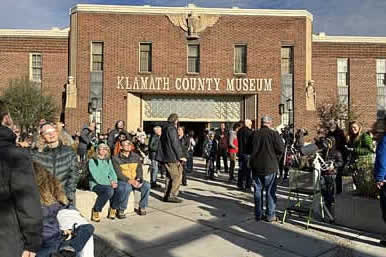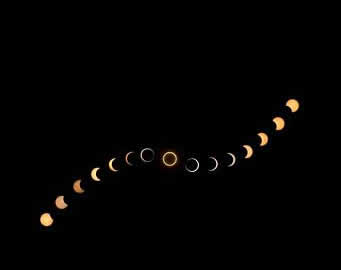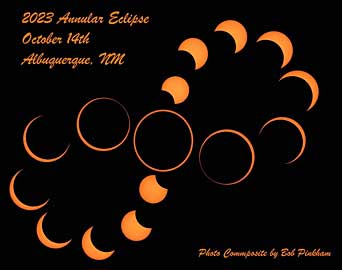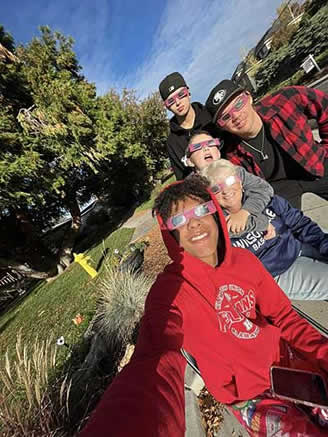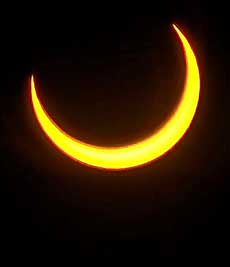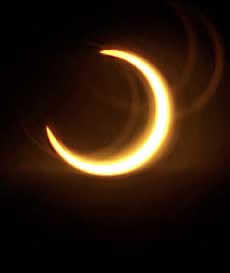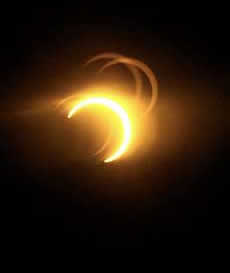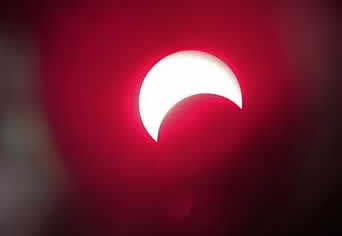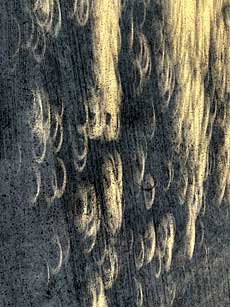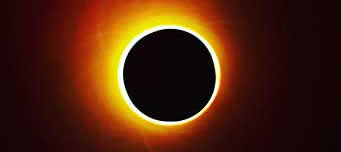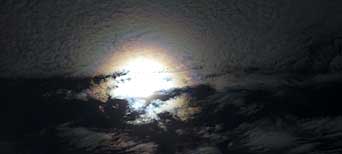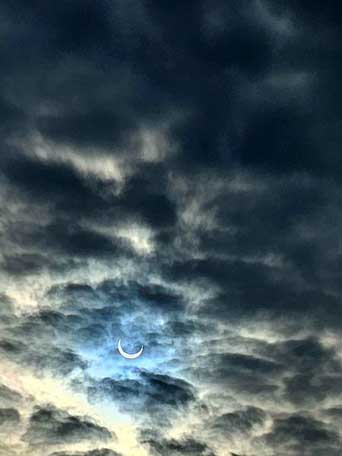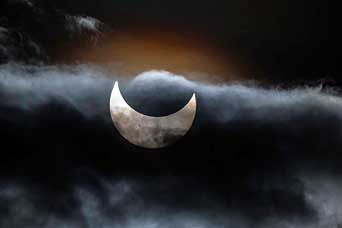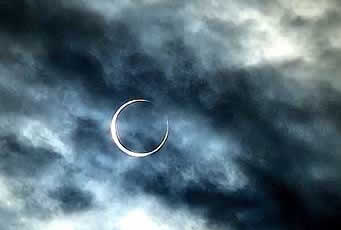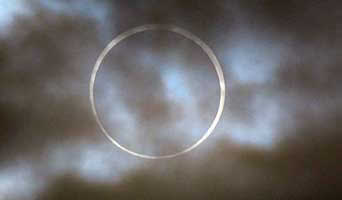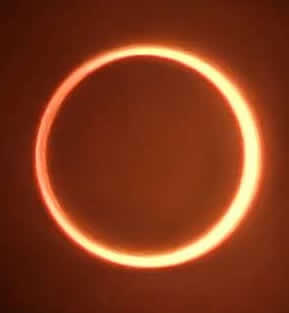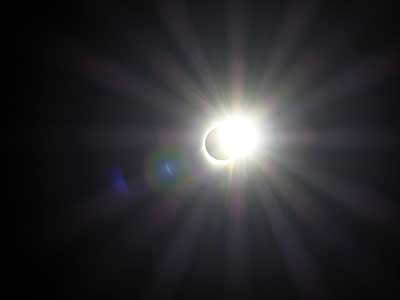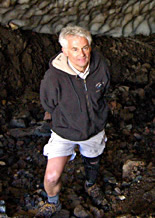 |
|
RING OF FIRE - SAVORING THE ANNULAR ECLIPSE |
|||
Story and photos by Lee Juillerat and as attributed |
|||
The weather forecast had been discouraging. Overcast skies and clouds were predicted. Bummer!
I’ve seen two total eclipses, one in 1979, another in 2017. To see my first eclipse, early in the morning I drove from my home in Southern Oregon’s Klamath Falls, due north to just outside the Central Oregon town of Shaniko, where I joined others who had parked overnight in a highway rest area. I had intentionally driven the long way home after running a marathon a day earlier. To see the second eclipse, following a multi-day backpacking trip, friends and I camped along the Metolius River, again in Central Oregon, to view the total eclipse, or “Moonshadow.”
Traveling to the recent annular eclipse was much easier. It was a less than mile from my house to the Klamath County Museum, where a small crowd, all of us wearing eclipse glasses, gathered that morning. Several telescopes and viewfinders were provided in order to better appreciate and safely see the happenings. Klamath County and areas of Southeast Oregon had been prepping for the event for months because all were directly inside the path of the eclipse, which began at 9:13 a.m., then raced across the U.S. to Texas before continuing to Central and South America. The national news media had been hyping the event, so there were hundreds of thousands of eclipse-peepers gathered at sites directly under the eclipse’s path, which included Crater Lake National Park and Klamath Falls.
What is an annular solar eclipse? First off, annular doesn’t refer to “annual,” but is defined as “having the form of a ring.” Annular eclipses happen when the apparent size of the moon’s disk is slightly smaller than the apparent size of the sun’s disk. As the partial solar eclipse begins, the moon moves across the sun, first seemingly taking a small bite, then gradually nibbling away more of the sun and – wait for it! - moving directly inside the sun’s shadow. It takes about an hour and 15 minutes to make the crossing, but the actual “Ring of Fire” lasts only a few minutes before the moon slowly continues working its way across the sun, gradually allowing the fiery orb to again be fully exposed.
Eclipse morning was exciting and fun. Like dozens of others, my friend Liane and I were bubbling with anticipation. The gathering included both friends and strangers. All of us had eclipse glasses, which are necessary because during an eclipse phase the sun shines brightly enough to cause serious eye damage. We mingled, shared stories and made new friends, including a teenager ready and eager to help others preserve memories. His mother explained that he had studied how to safely photograph the event by placing a filter under a camera or a cell phone atop a telescope and then snapping away.
The phases of the eclipse moved quickly - too quickly. As we watched, most people were quietly focused, viewing intently as the moon slowly began across the sun. There weren’t any whoopings and hollerings, just soft gasps. Unlike a total eclipse, when the sky turns eerily dark, the morning light only slightly dimmed. Fascinating, too, were the eerie shadows – some appearing like softly lit fluttering curtains.
As I’d learned from viewing the total eclipses, the excitement builds as the sun oh-so slowly disappears. There’s a sense of anxious anticipation as an eclipse happens. But as the moon passes the sun, what follows is anticlimactic. People disperse. And that’s what happened after the four-plus minutes of the annular eclipse.
For our lucky crowd with cloudless skies, the much-anticipated annular solar eclipse was an experience. For several days, friends near and far posted photos on Facebook, and many of those images – most of them credited to and approved by those who posted them – appear with this story.
But the story didn’t end after October’s annular eclipse. For many it whetted appetites to see another eclipse. Good news. Another will happen on Monday, April 8, 2024 - a total solar eclipse, already dubbed the Great North America Eclipse - will cross the U.S. Unlike the trajectory experienced this year, the 2024 eclipse will cross North America and be visible to tens of millions of people – 31 million live in the path of totality. Its path will be different. After starting in Mexico, it will enter the United States in Texas, then travel north and east across Oklahoma, Arkansas, Missouri, Kentucky, Indiana, Ohio, Pennsylvania, New York, Vermont, New Hampshire and Maine. Several people are already making plans to head to Texas, where the maximum duration of totality will be four minutes and 28 seconds at Piedras Negras.
And when I’m asked if I’m excited about the coming eclipse, the answer is easy – Totally.
About the Author
|




